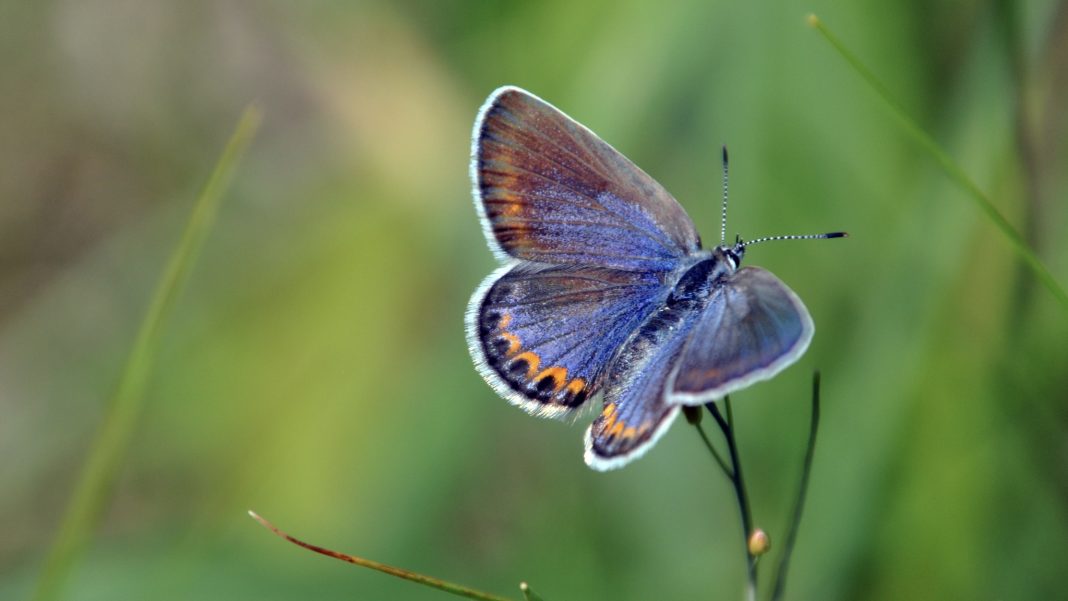The Karner blue – a tiny, powder blue butterfly – used to live in oak savannas and pine barrens across the Midwest and Northeast.
But over time, much of the Karner blue’s habitat has been destroyed – and today only a few small populations remain in places like Michigan, Wisconsin, and New York.
Now climate change is posing a whole new threat to this endangered butterfly.
Karner blue caterpillars only eat a plant called wild lupine. But as winters have grown warmer, the caterpillars have started hatching earlier in the year, before the lupine emerges.
Hoving: “And then there’s no food for them, and they can’t survive that.”
Christopher Hoving is with the Michigan Department of Natural Resources.
He says a similar timing mismatch can also happen in the fall.
Typically, two generations of Karner blues hatch each year. But warmer temperatures can cause a third generation of eggs to hatch instead of staying dormant through the winter.
These Karner blue caterpillars may struggle to grow and lay eggs of their own before it gets too cold. And they may have a hard time finding food.
Hoving: “There aren’t lupine plants, really, on the landscape in the fall. … That’s one of the biggest threats.”
So climate change could push these vivid little butterflies even closer to extinction.
Reporting credit: Ethan Freedman / ChavoBart Digital Media
We help millions of people understand climate change and what to do about it. Help us reach even more people like you.


